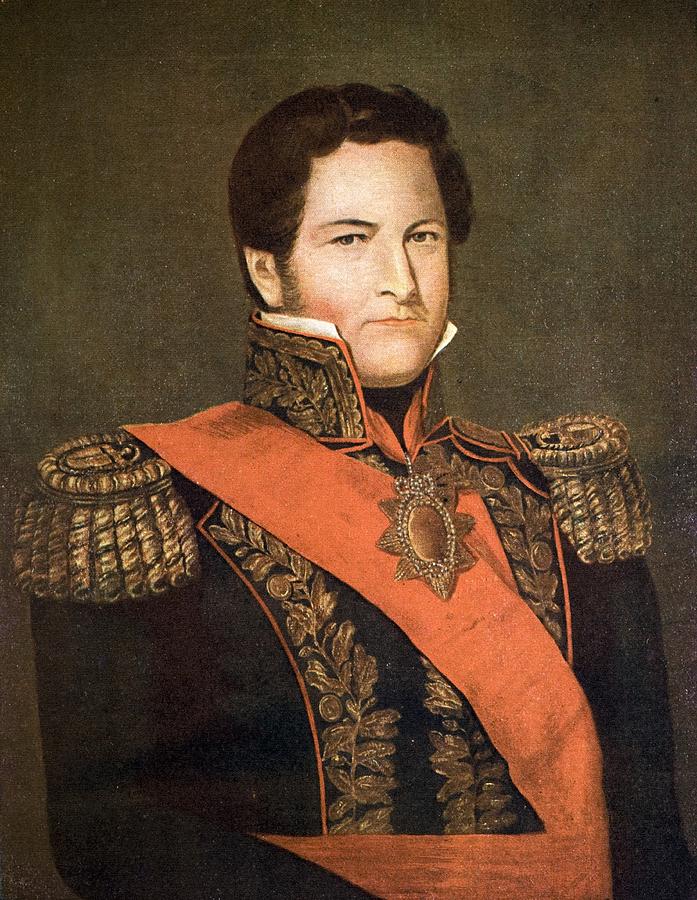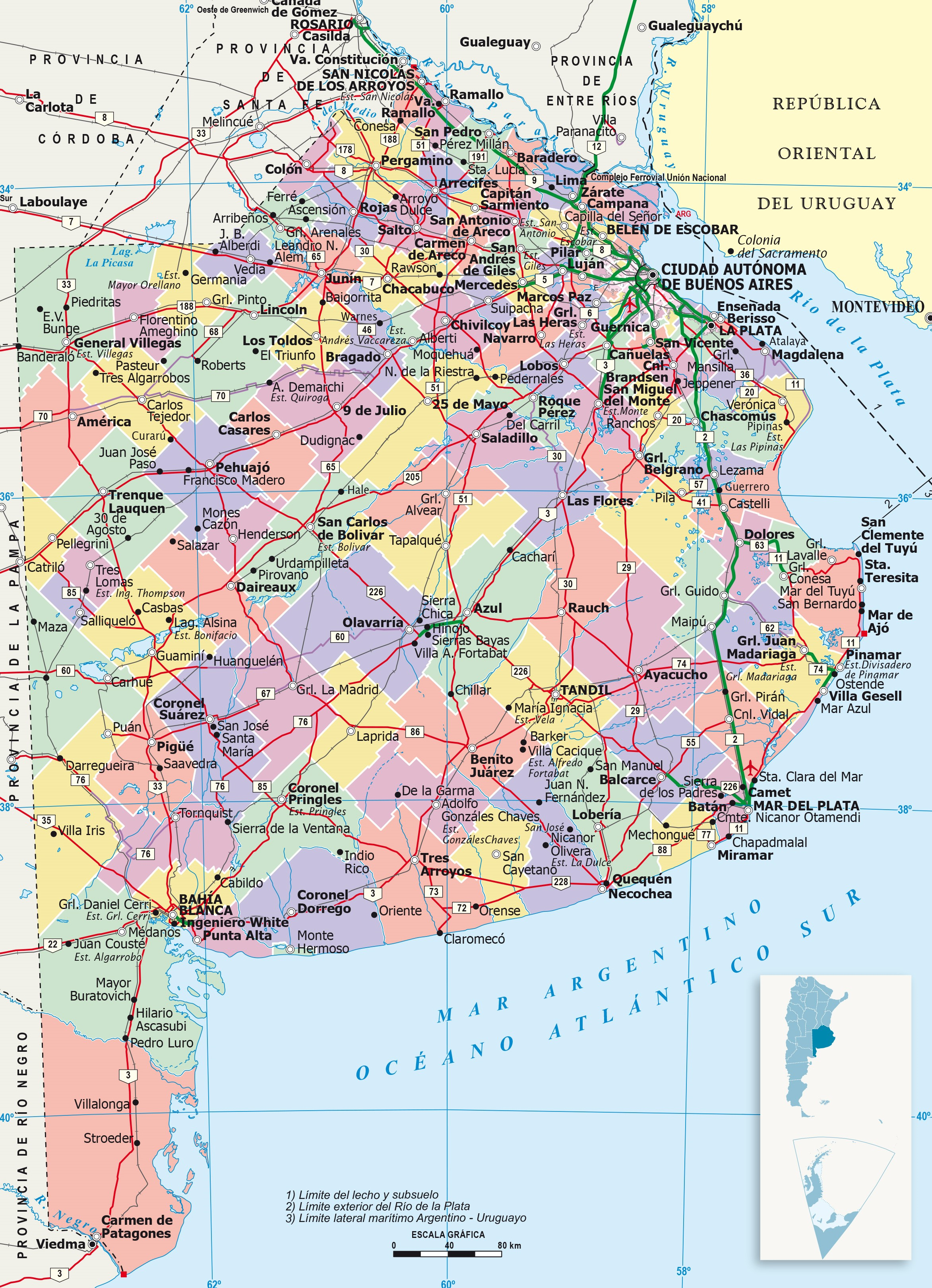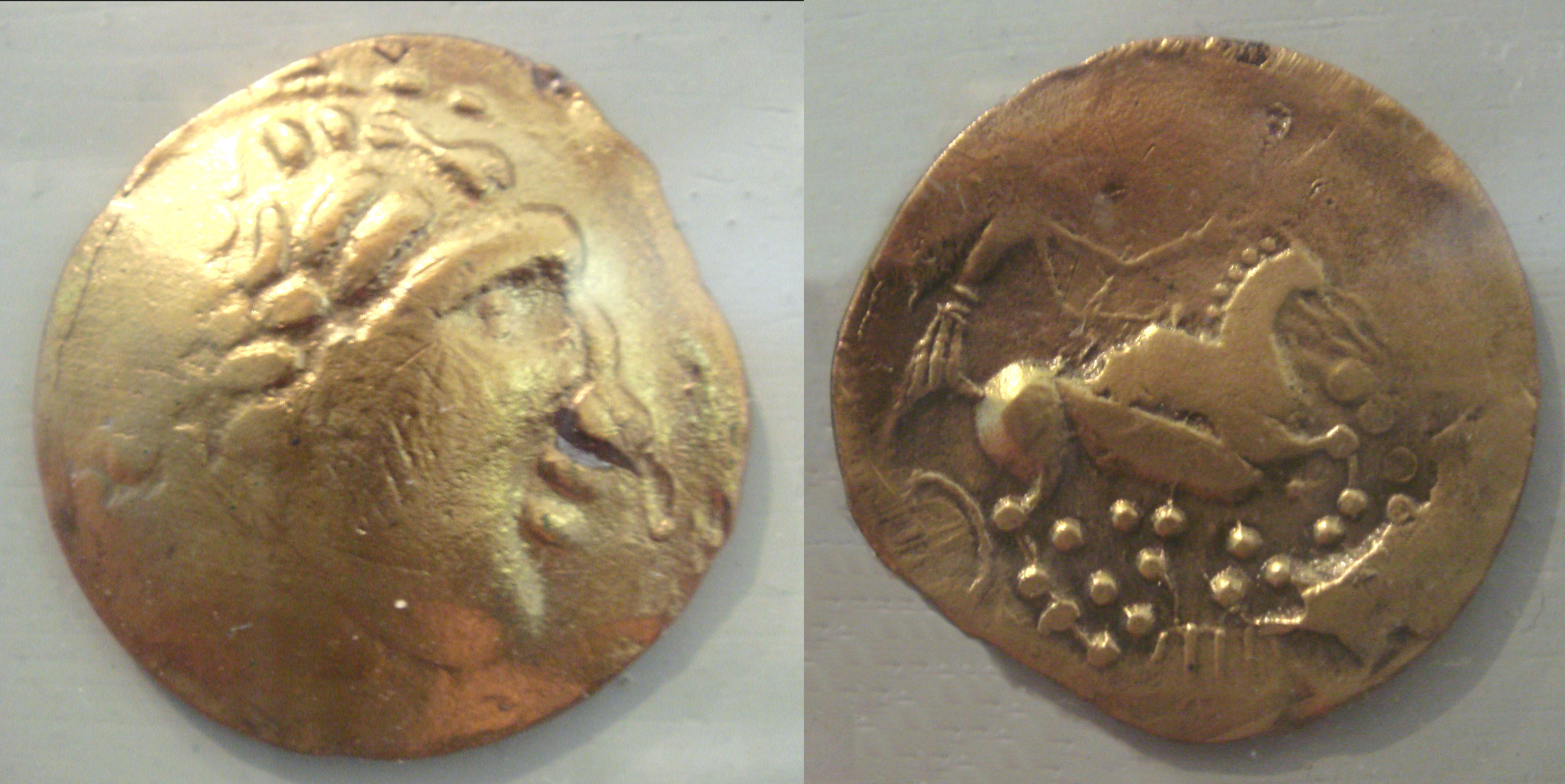|
Pigüé
Pigüé () is a town in Argentina located in the Pampas, south-west of Buenos Aires. It was founded by 165 Occitan-speaking French immigrants from Aveyron (Avairon in occitan) and one Argentine of direct Irish descent on December 4, 1884. The urban population is now 13,822 (INDEC 2001) and has increased by 9.5% since the 1991 census. Pigüé is the administrative centre of Saavedra Partido, Buenos Aires Province. History A brief account Pigüé, ''Pi-Hue'', which means ''gathering place'' in Mapuche tongue, is home to an Occitan-speaking community coming from Rouergue, Occitania. It is located where two chains of hills meet, the Cura Malal to the west and the Bravard to the east. But Pigüé would never exist as a town were it not for Clément Cabanettes, a man born in 1851 in the small village of Ambec, commune of Lassouts near Saint-Côme (Sant Còsme d'Òlt en occitan) in the southern French ''département'' of Aveyron (Avairon). Cabanettes, then 33 of age, organized the ... [...More Info...] [...Related Items...] OR: [Wikipedia] [Google] [Baidu] [Amazon] |
Buenos Aires Province
Buenos Aires, officially the Buenos Aires Province, is the largest and most populous Provinces of Argentina, Argentine province. It takes its name from the city of Buenos Aires, the capital of the country, which used to be part of the province and the province's capital until it was Federalization of Buenos Aires, federalized in 1880. Since then, in spite of bearing the same name, the province does not include Buenos Aires city, though it does include all other parts of the Greater Buenos Aires metropolitan area. The capital of the province is the city of La Plata, founded in 1882. It is bordered by the provinces of Entre Ríos Province, Entre Ríos to the northeast, Santa Fe Province, Santa Fe to the north, Córdoba Province, Argentina, Córdoba to the northwest, La Pampa Province, La Pampa to the west, Río Negro Province, Río Negro to the south and west and the Autonomous City of Buenos Aires to the northeast. Uruguay is just across the Rio de la Plata to the northeast, and bo ... [...More Info...] [...Related Items...] OR: [Wikipedia] [Google] [Baidu] [Amazon] |
Saavedra Partido
Saavedra Partido is a partido of Buenos Aires Province in Argentina. The provincial subdivision has a population of about 20,000 inhabitants in an area of , and its capital city is Pigüé, which is around from Buenos Aires. Settlements *Pigüé Pigüé () is a town in Argentina located in the Pampas, south-west of Buenos Aires. It was founded by 165 Occitan-speaking French immigrants from Aveyron (Avairon in occitan) and one Argentine of direct Irish descent on December 4, 1884. The u ... * Saavedra * Espartillar * Goyena * Arroyo Corto * Dufaur * Colonia San Martín External linksFederal Site(Spanish)Saavedra Website(Spanish)(Spanish) 1891 establishments in Argentina Partidos of Buenos Aires Province Volga German diaspora {{BuenosAiresAR-geo-stub ... [...More Info...] [...Related Items...] OR: [Wikipedia] [Google] [Baidu] [Amazon] |
Occitan Language
Occitan (; ), also known by its native speakers as (; ), sometimes also referred to as Provençal, is a Romance language spoken in Southern France, Monaco, Italy's Occitan Valleys, as well as Spain's Val d'Aran in Catalonia; collectively, these regions are sometimes referred to as Occitania. It is also spoken in Calabria ( Southern Italy) in a linguistic enclave of Cosenza area (mostly Guardia Piemontese) named Gardiol, which is also considered a separate Occitanic language. Some include Catalan as a dialect of Occitan, as the linguistic distance between this language and some Occitan dialects (such as the Gascon language) is similar to the distance between different Occitan dialects. Catalan was considered a dialect of Occitan until the end of the 19th century and still today remains its closest relative. Occitan is an official language of Catalonia, Spain, where a subdialect of Gascon known as Aranese is spoken (in the Val d'Aran). Since September 2010, the Par ... [...More Info...] [...Related Items...] OR: [Wikipedia] [Google] [Baidu] [Amazon] |
Partidos Of Buenos Aires
A ''partido'' is the administrative division, second-level administrative subdivision only in the . They are formally considered to be a single administrative unit, usually contain one or more population centers (i.e., towns and cities), and are divided into ''localidades''. The subdivision in partidos in Buenos Aires Province is distinct from all other provinces of Argentina, which call their second-level subdivisions ''departments of Argentina, departamento'' and are further subdivided into distinct Municipalities of Argentina, municipalities. History By the end of 18th century the town council (cabildo (council), cabildo) of Buenos Aires established the first partidos in the countryside: San Isidro del Pago de la Costa (San Isidro Partido, San Isidro) in 1779 and San Vicente Partido, San Vicente, Quilmes Partido, Quilmes, Magdalena Partido, Magdalena, La Matanza Partido, La Matanza, Cañada de Morón (Morón Partido, Morón), Las Conchas (Tigre Partido, Tigre) and San Pedro ... [...More Info...] [...Related Items...] OR: [Wikipedia] [Google] [Baidu] [Amazon] |
Clément Cabanettes
Clément Cabanettes (14 August 1851 – 14 July 1910) was born in Ambec near the small town of Saint-Côme-d'Olt in the southern French ''département'' of Aveyron. He is remembered for bringing forty families (164 men, women and children) from Aveyron to Argentina and founding the town of Pigüé Pigüé () is a town in Argentina located in the Pampas, south-west of Buenos Aires. It was founded by 165 Occitan-speaking French immigrants from Aveyron (Avairon in occitan) and one Argentine of direct Irish descent on December 4, 1884. The u ..., Saavedra in 1884. References 1851 births 1910 deaths People from Aveyron French emigrants to Argentina {{France-bio-stub ... [...More Info...] [...Related Items...] OR: [Wikipedia] [Google] [Baidu] [Amazon] |
Eduardo Casey
Eduardo Casey (April 20, 1847 – July 23, 1906), was an Argentine landowner of Irish descent. In 1880 he purchased of land in Santa Fe Province and founded there the present-day city of Venado Tuerto, named after a one-eyed deer that alerted early settlers to attacks by local Indians. He also helped in the founding and funding of the Argentine town of Pigüé, Saavedra in 1884. He was born in Lobos, Province of Buenos Aires, the son of Lawrence Casey, born in Westmeath, and Mary O'Neill, of Wicklow Wicklow ( ; , meaning 'church of the toothless one'; ) is the county town of County Wicklow in Republic of Ireland, Ireland. It is located on the east of Ireland, south of Dublin. According to the 2022 census of Ireland, 2022 census, it had .... He was married to María Inés Gahan, daughter of John Gahan and Mary Devitt, belonging to a family of Irish Catholics. References 1847 births 1906 deaths People from Buenos Aires Argentine people of Irish descent ... [...More Info...] [...Related Items...] OR: [Wikipedia] [Google] [Baidu] [Amazon] |
Argentina
Argentina, officially the Argentine Republic, is a country in the southern half of South America. It covers an area of , making it the List of South American countries by area, second-largest country in South America after Brazil, the fourth-largest country in the Americas, and the List of countries and dependencies by area, eighth-largest country in the world. Argentina shares the bulk of the Southern Cone with Chile to the west, and is also bordered by Bolivia and Paraguay to the north, Brazil to the northeast, Uruguay and the South Atlantic Ocean to the east, and the Drake Passage to the south. Argentina is a Federation, federal state subdivided into twenty-three Provinces of Argentina, provinces, and one autonomous city, which is the federal capital and List of cities in Argentina by population, largest city of the nation, Buenos Aires. The provinces and the capital have their own constitutions, but exist under a Federalism, federal system. Argentina claims sovereignty ov ... [...More Info...] [...Related Items...] OR: [Wikipedia] [Google] [Baidu] [Amazon] |
Gabriac, Aveyron
Gabriac (; ) is a Communes of France, commune in the southern French Departments of France, department of Aveyron. Population See also *Communes of the Aveyron department References Communes of Aveyron Aveyron communes articles needing translation from French Wikipedia {{Aveyron-geo-stub ... [...More Info...] [...Related Items...] OR: [Wikipedia] [Google] [Baidu] [Amazon] |
Naucelle
Naucelle (; ) is a commune in the Aveyron department in southern France. Naucelle station has rail connections to Toulouse, Albi and Rodez. Population Personalities * Ozil de Cadartz, medieval troubadour * Marcellin Cazals, Resistance fighter * Jean Cuq, the general was from Naucelle. See also *Communes of the Aveyron department The following is a list of the 285 communes of the Aveyron department of France. Out of the land area is being , and the percentage of the department's land area is just 34 per cent of its land area of an average commune. The communes cooperat ... References Communes of Aveyron {{Aveyron-geo-stub ... [...More Info...] [...Related Items...] OR: [Wikipedia] [Google] [Baidu] [Amazon] |
Aurelle-Verlac
Aurelle-Verlac (; Languedocien: ''Aurèla e Verlac'') is a former commune in the Aveyron department in the Occitanie region of southern France. On 1 January 2016, it was merged into the new commune of Saint-Geniez-d'Olt-et-d'Aubrac. Geography Aurelle-Verlac is located in the Massif Central in Aubrac some 60 km east of Decazeville and 70 km south-east of Aurillac with the eastern border of the commune being the border between Aveyron and Lozère departments. Access to the commune is by road D503 from Saint-Geniez-d'Olt in the south which goes north through the village and most of the length of the commune before going west to join the D219 west of the commune. Apart from the village there are the hamlets of Crespiac, Verelaguet, Les Mazes, La Frassinede, Naves d'Aubrac, La Molière, Moncan, Rieuzens, Bernie, Les Caps, and Les Ginestes. The commune is mainly deep valleys where ''boraldes'' flow down to the Lot. The highest point in the department is on the ''Signal de ... [...More Info...] [...Related Items...] OR: [Wikipedia] [Google] [Baidu] [Amazon] |
Saint-Geniez-d'Olt
Saint-Geniez-d'Olt (, literally ''Saint Geniez of Lot (river), Olt''; ) is a former Communes of France, commune in the Aveyron Departments of France, department in southern France. On 1 January 2016, it was merged into the new commune of Saint-Geniez-d'Olt-et-d'Aubrac. The theologian and encyclopédistes, encyclopédiste Jean Pestré (1723–1821) was born in the village. Population Its inhabitants are called ''Marmots'' in French. habitants.fr See also *Communes of the Aveyron department *List of medieval bridges in FranceReferences External links Marmotel camping F ... [...More Info...] [...Related Items...] OR: [Wikipedia] [Google] [Baidu] [Amazon] |
Bordeaux
Bordeaux ( ; ; Gascon language, Gascon ; ) is a city on the river Garonne in the Gironde Departments of France, department, southwestern France. A port city, it is the capital of the Nouvelle-Aquitaine region, as well as the Prefectures in France, prefecture of the Gironde department. Its inhabitants are called "''Bordelais'' (masculine) or "''Bordelaises'' (feminine). The term "Bordelais" may also refer to the city and its surrounding region. The city of Bordeaux proper had a population of 259,809 in 2020 within its small municipal territory of , but together with its suburbs and exurbs the Bordeaux Functional area (France), metropolitan area had a population of 1,376,375 that same year (Jan. 2020 census), the sixth-most populated in France after Paris, Lyon, Marseille, Lille, and Toulouse. Bordeaux and 27 suburban municipalities form the Bordeaux Métropole, Bordeaux Metropolis, an Indirect election, indirectly elected Métropole, metropolitan authority now in charge of wi ... [...More Info...] [...Related Items...] OR: [Wikipedia] [Google] [Baidu] [Amazon] |



